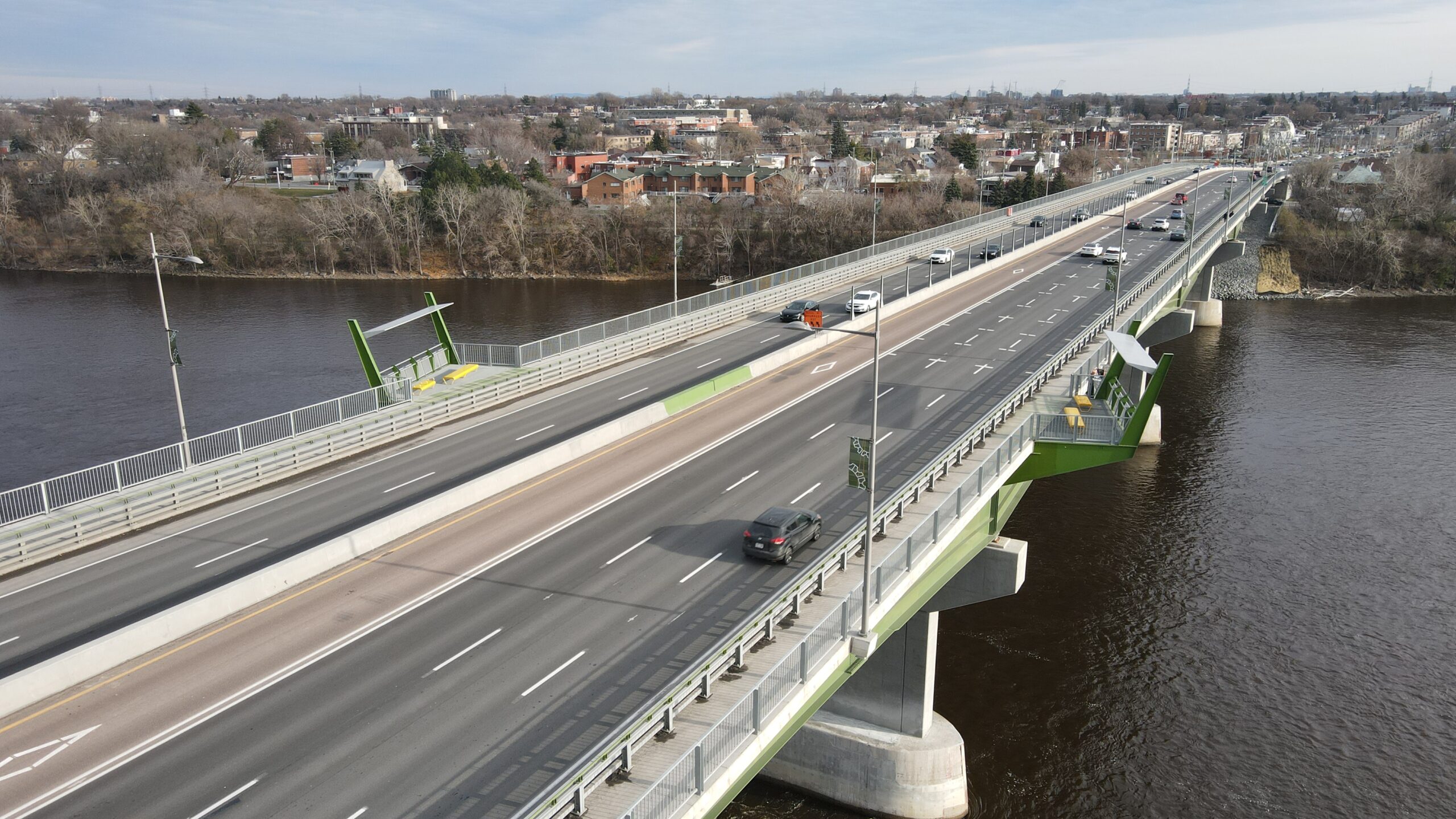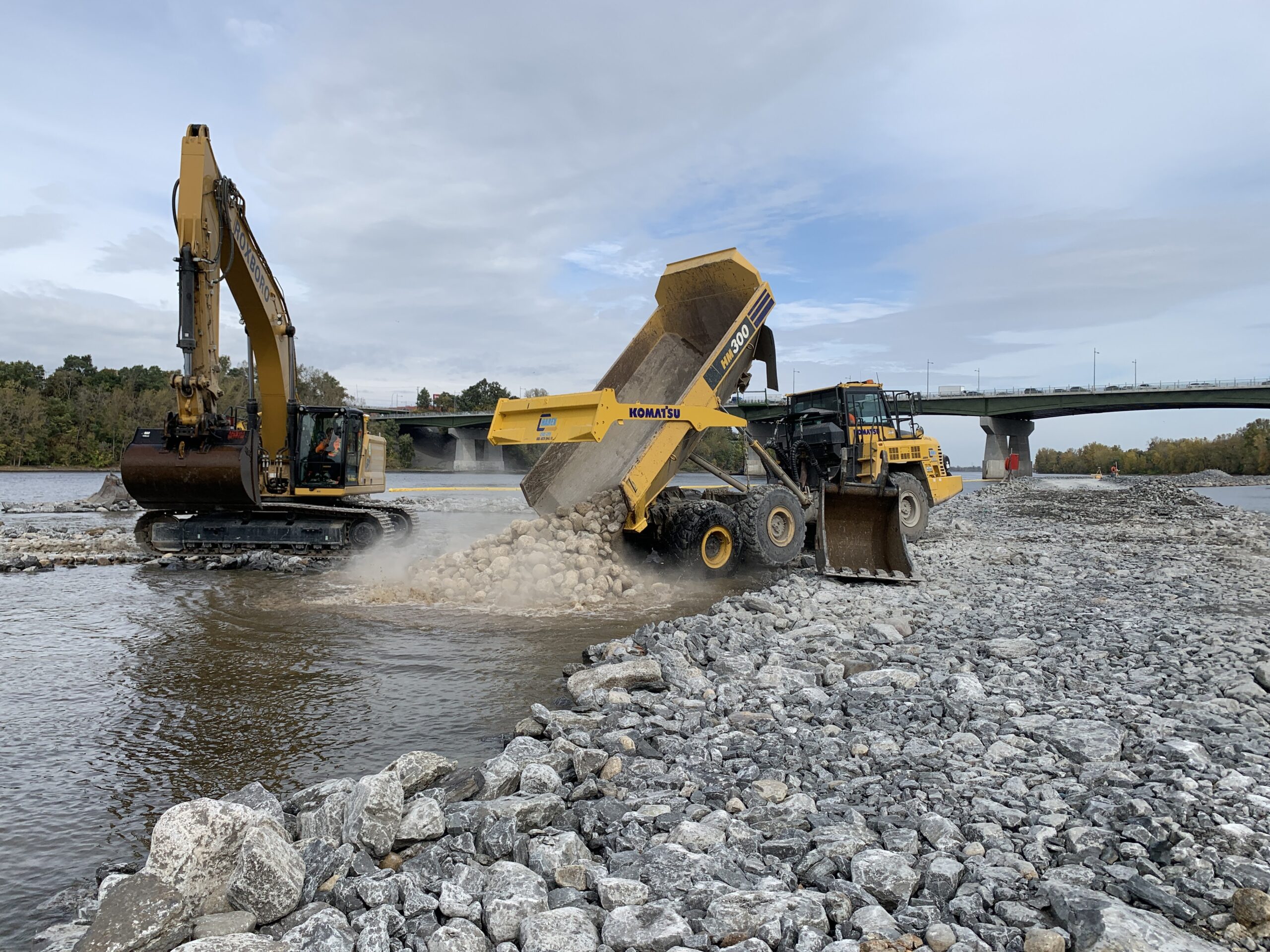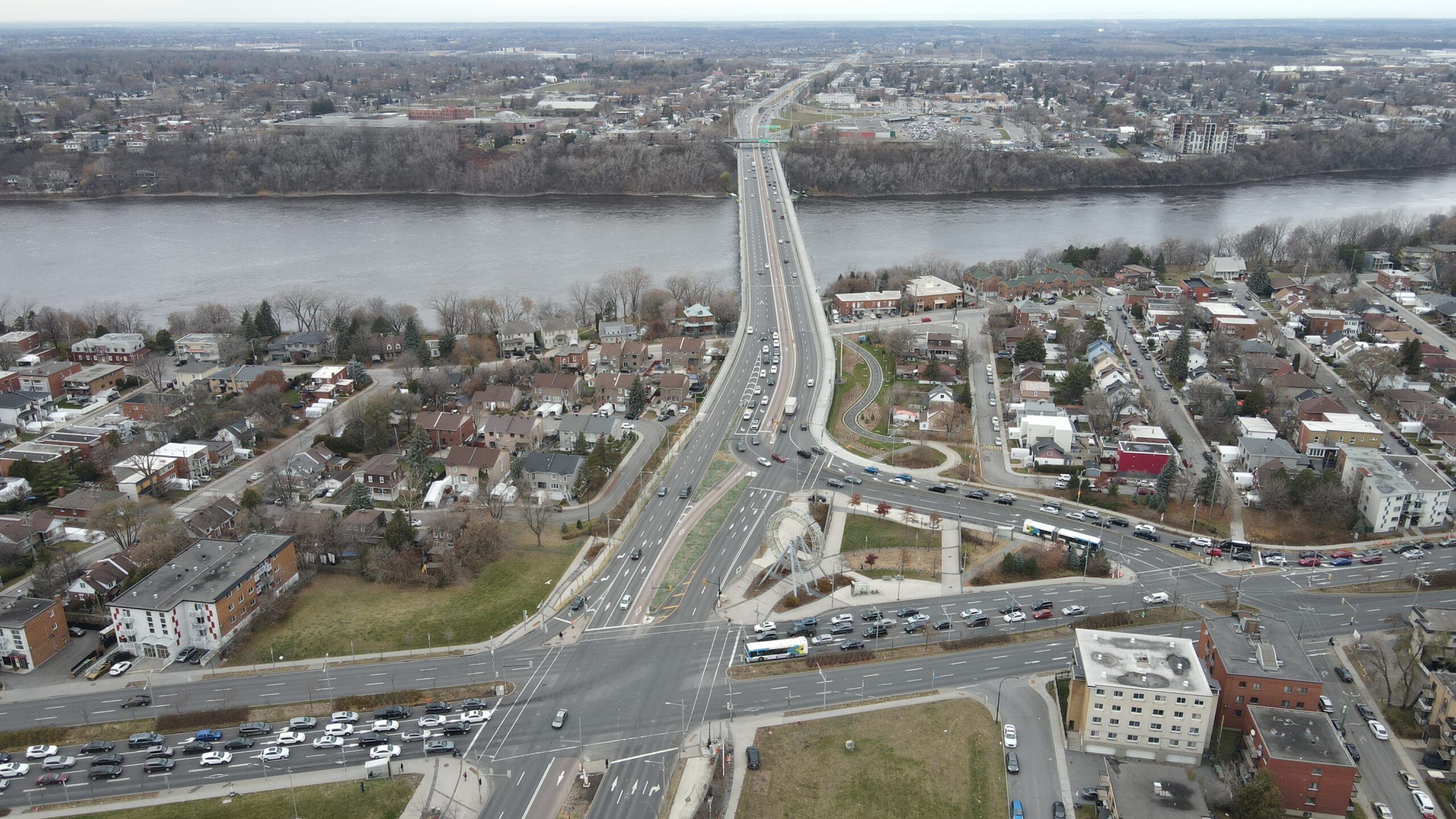When it comes to Urban Development and Transportation, there are few initiatives as vital as those that connect communities and revitalize essential infrastructure assets. In this blog, we explore the ambitious project that was carried out by the Ministère des Transports et de la Mobilité durable (MTMD, formerly MTQ), in partnership with CIMA+, involving the revitalization of the Pie-IX Bridge and integration of a reserved bus lane (Pie-IX BRT) within the Route 125 corridor.
Not only did this initiative enhance connectivity, it also highlighted the importance of coordination among the various stakeholders when orchestrating a multi-faceted project such as this.
Developing and maintaining infrastructure assets is essential to the proper functioning of any metropolitan area. As the economic engine of Québec, Montréal must keep its infrastructure assets properly maintained in order to support its growth. A large number of indispensable efforts are currently underway to improve the transportation infrastructure and allow the city to move forward. One of these projects was the rehabilitation and reconstruction of the Pie-IX Bridge and its surroundings – a key transportation link between Laval and Montréal. This project, which was launched in 1999, is still considered to be one of Québec’s largest infrastructure projects. CIMA+ was chosen to redesign this landmark and blend it into the existing urban landscape while incorporating new plans related to traffic management and the future of public transit.
The project represents a major undertaking that involved multiple structures and a significant volume of roadwork. The main components of the project are detailed below.

Rehabilitation of the Pie-IX Bridge
Built in 1966, the Pie-IX Bridge is a vital artery spaning Rivière des Prairies, featuring a main span and an approach bridge that straddles Boulevard Gouin. The bridge is used by more than 80,000 vehicles every day. This project involved a complete rehabilitation of the bridge’s infrastructure and included major repairs and a change in functionality (addition of multiple alternative transport modes, including cycling, bus service, pedestrians, improved accessibility for persons with reduced mobility, etc.) all while preserving elements of its original aesthetic. It entailed the complete reconstruction of the deck, girders and guard-rails, along with reinforcement of the piers to support the new wider deck and strengthen the structure against seismic events . It also incorporated a reserved bus lane with coloured asphalt, thus considerably improving public transit access for the neighbouring communities. Safety measures were a paramount consideration in the project. Bar-shaped horizontal pavement markings and strategically positioned vertical visual elements were implemented to serve as natural speed-reducing elements for users entering Montréal. This not only enhances safety for all but also contributes to a more secure and efficient transportation experience.

In addition, repairs to the bridge were carefully designed in collaboration with GR7 Architecture to ensure the aesthetic appeal of the site. Painted in bright colours and adorned with functional and architectural elements, the bridge became a captivating canvas that reflects the cultural vitality of the surrounding communities. Thoughtfully incorporated scenic lookouts further enhance the experience, offering a panoramic view of the surroundings and creating a space where residents and visitors can appreciate the beauty of the river and their city.

New bus access ramp for the Boulevard de la Concorde structure
This sector, which consists of two reinforced-concrete portal frames and massive retaining walls on the approaches, is a crucial component within the corridor. The rehabilitation efforts focused on repairing the structures and constructing reinforced-earth walls to allow for the creation of a new access ramp for the reserved bus lane running along the median of Route 125.
Intelligent transportation systems (ITS)
Improved real-time management of traffic and safety was facilitated by the extension of the MTMD fibre-optic network and the deployment of various ITS devices along Route 125, including cameras, variable message signs and vehicle detection systems.
Construction of a fish spawning ground
In order to enhance the aquatic ecosystem near the bridge, a new whitewater spawning ground was built in Rivière des Prairies. This new installation, which covers more than 6,000 square meters, enhances and creates breeding habitats for a number of fish species, including freshwater sturgeon, largemouth bass and walleye.

Connecting communities
This project has a deeper meaning that goes beyond structural improvements – the linking of communities. By revitalizing these vital transportation arteries, the project brings the inhabitants of Laval and Montréal closer together, thus promoting greater connectivity and accessibility. The integration of a reserved bus lane (Pie-IX BRT) increased public transit options, thus reducing congestion and promoting environmentally friendly commuting. This interlinked network not only enhances overall mobility but also plays a pivotal role in strengthening the economic and social cohesion of the region .
Services provided by CIMA+
The contribution of CIMA+ to this project encompassed a wide range of services, including risk analysis, structural assessment, seismic upgrading, cost-effective recommendations, traffic and signalization management strategies, preparation of drawings and specifications, construction orientation and coordination among a diverse group of stakeholders.

Conclusion
In essence, the rehabilitation and revitalisation of the Pie-IX Bridge corridor that was carried out by CIMA+ goes beyond conventional infrastructure improvements. By adopting a holistic approach that incorporates the various modes of active and motorized transportation and meets the needs of the community, the Pie-IX Bridge corridor emerges as a potential blueprint for future initiatives.
This project represents a bold vision of interconnected communities, favouring a sense of belonging and promoting active, accessible, and environmentally friendly lifestyles. The specialists at CIMA+ were mindful of placing community and the needs of users at the heart of the project, thus demonstrating the profound impact that strategic and inclusive urban development can have. The success of this enterprise demonstrates the power of collaboration among a variety of stakeholders and illustrates the potential of collective efforts in terms of building stronger and more cohesive societies.
Roles and responsibilities of the Project Leader
In his capacity as the Project Leader and Design Engineer, Philippe Lapalme played a key role in orchestrating the success of this multi-faceted enterprise and drafting this blog article.
His involvement in the Pie-IX Bridge project included the following:
- Coordinating the collaborative efforts of the various multidisciplinary teams involved in the project in an amicable and efficient manner;
- Supervising the alignment of goals among a large number of external stakeholders, including MTMD, Ville de Montréal, Ville de Laval, STM, CSEM, etc.;
- Contributing to the structural design and verification processes;
- Responding to the multiple demands of the various stakeholders in an innovative manner in order to ensure the success of the project;
- Collaborating closely with our client (MTMD) in order to ensure that their objectives were met;
- Implementing various measures aimed at improving community safety and protecting the environment.